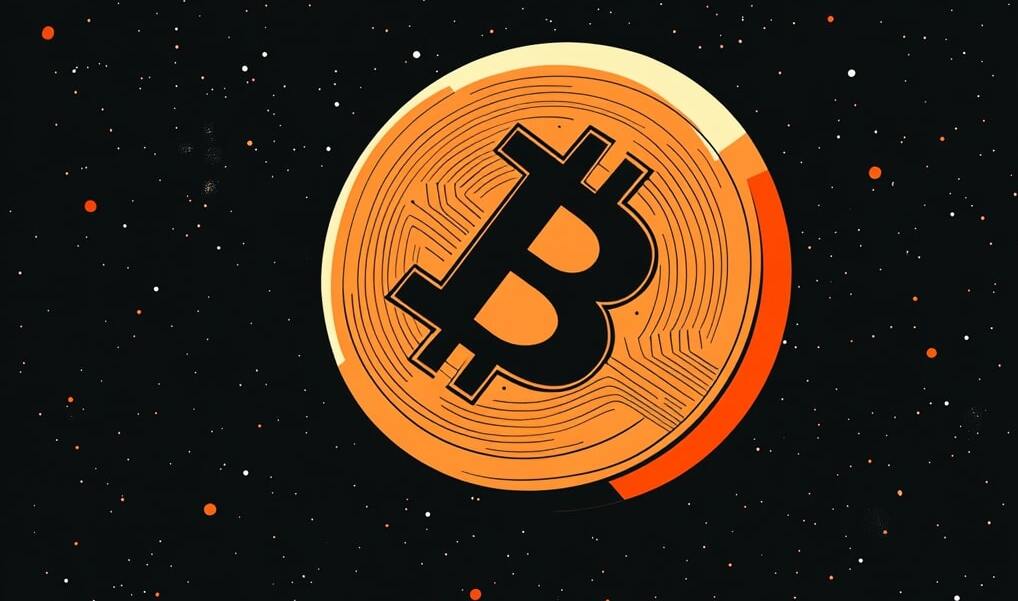
Bitcoin Price Outlook: Can BTC-USD Break Past $90,000 in 2025?
With Bitcoin recovering from a dip, what factors could drive BTC-USD beyond its resistance at $90,000 in the coming months? | That's TradingNEWS
Bitcoin Price: Analyzing BTC-USD’s Recovery Amid Market Volatility
Bitcoin (BTC-USD) has recently shown signs of recovery, trading around $84,000 after a brief dip. Despite this, Bitcoin's price is still far from its recent all-time highs, sparking mixed sentiment in the market. This article dives into Bitcoin's current price action, explores the underlying market factors, and assesses the potential for its next significant move.
The Impact of Economic Uncertainty on Bitcoin (BTC-USD)
Bitcoin's performance in 2025 has been marked by considerable volatility, partly due to the ongoing economic uncertainties. These include the tariffs proposed by the U.S. government, which have cast a shadow over the broader financial markets. As Bitcoin (BTC-USD) is often seen as a risk asset, its price has been correlated with equity markets, which are currently under pressure due to the possibility of stagflation and other macroeconomic risks.
At the time of writing, Bitcoin’s price has stabilized just above $84,000, recovering from a significant decline the previous week. This reflects a 2% increase, indicating a potential shift toward recovery. However, despite these short-term gains, the broader market remains cautious, and Bitcoin’s price continues to be influenced by external economic factors, particularly Trump’s tariff policies and the looming risks of stagflation.
Institutional Activity and Bitcoin’s Market Dominance
One of the key drivers behind Bitcoin's recent performance is the growing dominance of BTC-USD within the crypto space. As of the latest reports, Bitcoin's market dominance has risen to 61.4%, highlighting a shift toward Bitcoin as a relatively safer asset during times of market stress. This uptick in dominance signals that institutional investors are increasingly flocking to Bitcoin, while alternative cryptocurrencies (altcoins) have seen less interest.
Notably, Tether, a major issuer of stablecoins, recently withdrew 8,888 BTC from Bitfinex's hot wallet, adding it to its reserve. This withdrawal, worth $735 million, reflects strong institutional confidence in Bitcoin and is seen as a bullish indicator. When Bitcoin is moved to non-exchange wallets, it reduces immediate selling pressure and signals that major players are positioning themselves for long-term price appreciation.
Comparing Bitcoin to Gold: The Case for BTC-USD as a Store of Value
Another key aspect of Bitcoin's appeal is its comparison to traditional safe-haven assets like gold. While gold has historically been a store of value, Bitcoin’s fixed supply of 21 million coins and its transparent, predictable issuance schedule make it a more compelling alternative in the eyes of many investors.
Currently, Bitcoin’s total market capitalization is significantly lower than that of gold, but as institutional adoption continues to grow, Bitcoin could eventually rival gold in terms of its role as a strategic reserve asset. This potential shift is evident in the discussions surrounding the White House’s proposed Bitcoin Act of 2025, which could allow the U.S. to acquire 1 million bitcoins over the next five years. If passed, this law could exert significant influence on Bitcoin’s price, potentially creating upward pressure as the U.S. government adds to its Bitcoin reserves.
Bitcoin's Seasonal Trends and Future Price Expectations
Bitcoin’s price behavior has often followed distinct seasonal patterns, with significant gains typically occurring in the latter half of the year. According to historical trends, Bitcoin has experienced a strong performance during April and May, with average returns of 7.8% and 11.5%, respectively. This seasonality, combined with the ongoing structural shift toward institutional adoption, suggests that Bitcoin could experience another rally in the coming months.
While Bitcoin is currently trading below its recent highs of $100,000, it has shown resilience even in the face of market volatility. If the broader macroeconomic conditions stabilize and the tariffs imposed by the U.S. government do not worsen, Bitcoin could see a substantial increase in demand, pushing its price higher.
Bitcoin’s Market Structure and Low Selling Pressure
A key feature of the current Bitcoin market is the low level of selling pressure. Bitcoin's exchange inflows have dropped significantly, from 81,000 BTC to just 29,000 BTC daily since late 2024. This decrease in selling activity indicates that many Bitcoin holders are not liquidating their positions, signaling a potential supply shortage. As fewer Bitcoins are available on exchanges, this could create upward price pressure, especially if demand remains steady.
In addition, long-term holders of Bitcoin are showing confidence in the asset’s future, with fewer long-dormant coins being sold. This trend is reflected in the Coin Days Destroyed (CDD) metric, which has been declining since March 2025, suggesting that seasoned Bitcoin investors are holding their assets rather than selling into the rally.
Bitcoin’s Price Outlook and Risk Factors
Despite the positive signs, Bitcoin's price remains vulnerable to broader market factors, especially the ongoing economic uncertainty caused by President Trump’s tariffs and the risks of stagflation. If the tariffs lead to increased inflation or further damage to global growth, Bitcoin could face short-term downward pressure.
Bitcoin’s price currently hovers around $84,000, with technical indicators showing a mixed outlook. The Relative Strength Index (RSI) is near 45, indicating weak bearish momentum, while the Moving Average Convergence Divergence (MACD) is signaling indecisiveness in market sentiment. A break above the key resistance level of $85,000 could set the stage for a rally toward $90,000, but if Bitcoin fails to break through this level, a retreat to lower support levels near $78,000 could be in play.
Conclusion: Is Bitcoin (BTC-USD) a Buy?
While the near-term outlook for Bitcoin remains uncertain due to macroeconomic risks, the long-term prospects for Bitcoin continue to look promising. The ongoing shift toward institutional adoption, along with the structural shortage of available Bitcoin on exchanges, positions the asset for potential future gains. Given Bitcoin’s resilience in the face of economic uncertainty and its role as a store of value, it remains a strong buy for investors who are willing to weather short-term volatility.
















